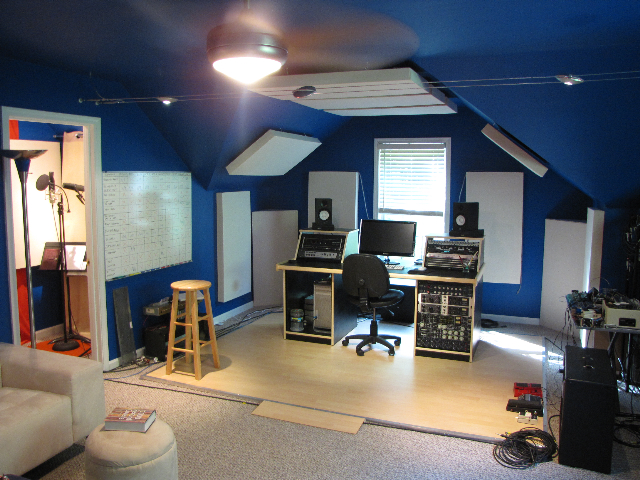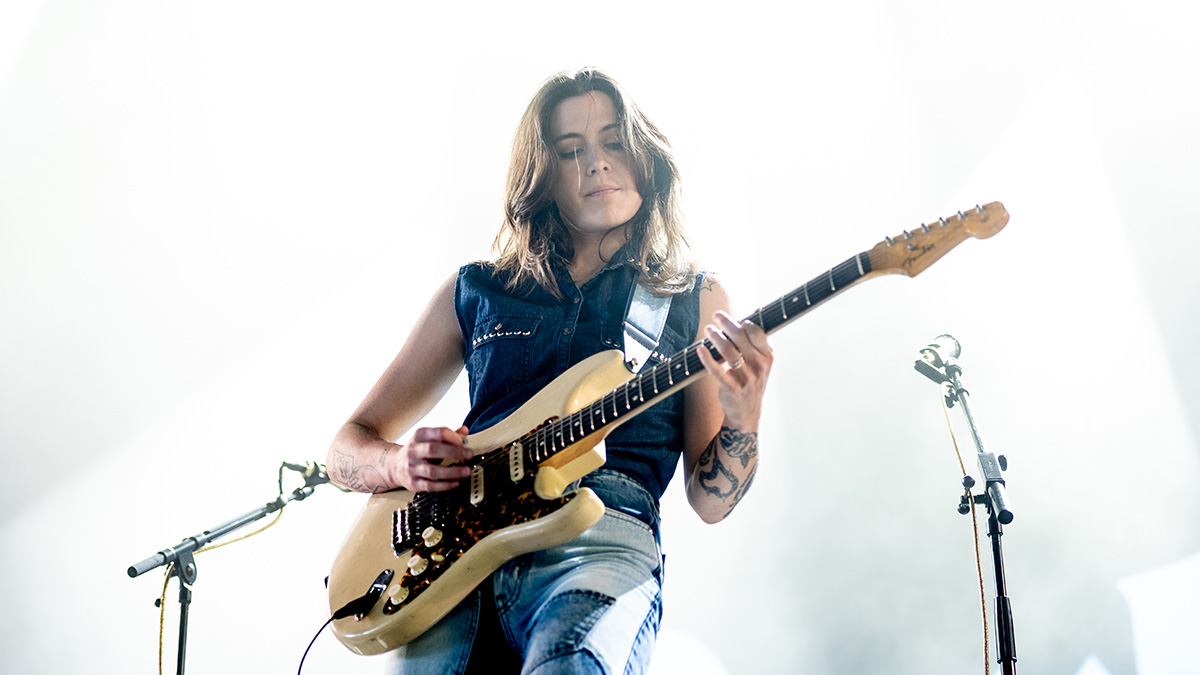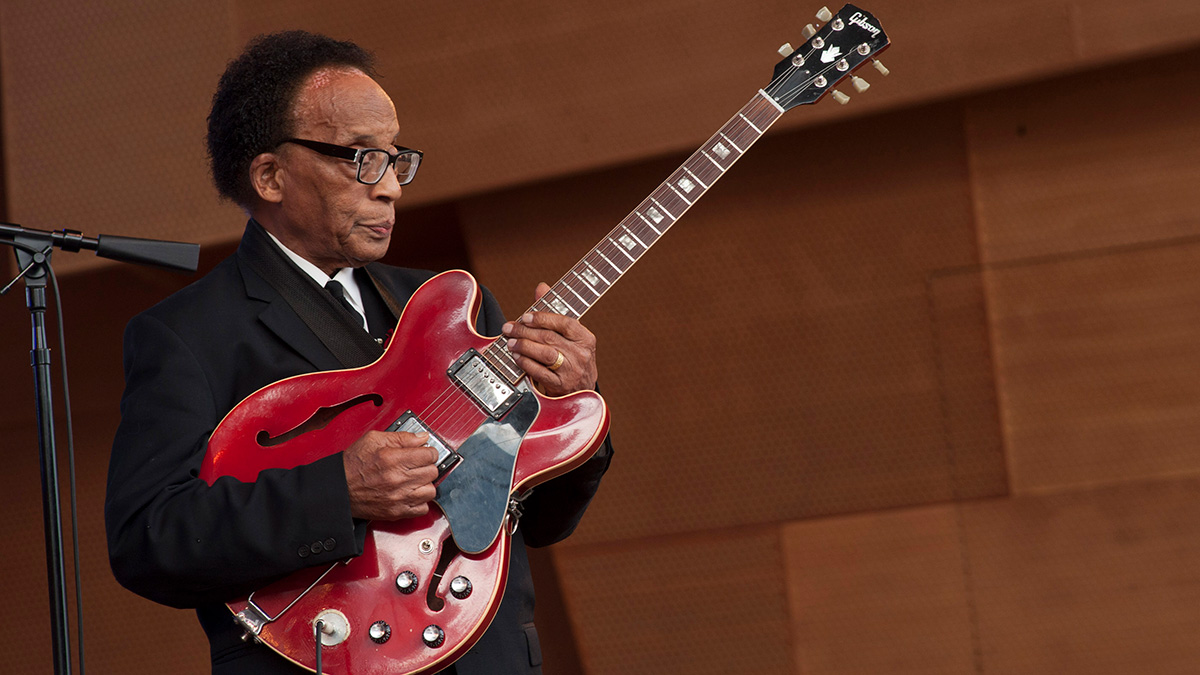Killer Guitar Tracks: The Art and (Not So Exact) Science of Recording Guitar

Hello, fellow guitar geeks!
In this GuitarWorld.com blog, we’re going to learn how to setup and record killer guitar sounds. I hope to demystify the process a bit for the player who’s new to the world of recording; and, for the more experienced, perhaps you’ll find some of these tips and techniques that I’ve learned useful.
First, here’s the good news/bad news routine. The good news is that recording electric guitar is actually a fairly simple, straightforward process, and you really don’t have to spend a fortune on gear to capture awesome tones.
The bad news is that guitar sounds are so subjective that you can literally spend hours chasing your tail and asking yourself questions like, “Is this too bassy? Too distorted? Too boxy?” etc. I think perhaps the greatest challenge for any engineer is to make the guitar player happy with his recorded tone and to make it sound like what he hears when he’s standing in front of the cab doing windmills and making guitar faces.
You’ll learn that in the world of recording, every instrument occupies a range of frequencies and has to find a place in the sonic spectrum that doesn’t conflict or muddy up the surrounding instruments. Yes, it can be tricky to capture the “wall of doom” guitar sound, make it fit in with the rest of the instruments and please us picky guitar players. But we can do it. We have the technology!
Let’s start with some basic but important general information about recording; more specifically, recording electric guitars:
Guitars and amps
Get The Pick Newsletter
All the latest guitar news, interviews, lessons, reviews, deals and more, direct to your inbox!
If you want to capture a great guitar tone, you need to start by having a great guitar tone. It seems fairly obvious, but it’s worth making the point that your job will be much easier if you have decent guitars that are intonated well and hold their tuning.
Amps come in all shapes and sizes, but since guitar tones are so subjective, it’s hard for me to tell you what I think is really great and what I think sucks. What I will say is that whatever gear you have, make sure it’s dialed in and working well, tuned up, re-tubed etc. This will allow you to focus your efforts on playing well and the recording process itself.
Microphones
Good news! Some of the best guitar tones ever recorded were done with a microphone that costs about a hundred bucks. You’ve heard about the Shure SM57, right? Now go and check one out. We’ll talk about other microphones, and even the technique of blending them together, but I think for the beginner, the SM57 is a great place to start.
Microphone preamps
Man, you think the guitar amp community can be a “cork-sniffing” bunch? Wait until you enter the world of mic-pre snobs! At least when you plunk down 2 or 3 K for a guitar amp, you’ll get more than two knobs to turn. This is another area that is highly subjective, but thankfully there’s a lot of great stuff out there for the money, and the “flavors” that different mic-pres offer are more subtle, so let your budget decide what you should get.
I will say that if your mic pre has a high pass filter, consider that a plus, as that will help keep the low end in check.
Recording medium
I really love how tape sounds, but these days it’s hard to justify the cost and maintenance of a 24-track machine. I use a DAW (digital audio workstation). In my case, this means a Mac computer, Pro Tools software and my modded Digi 002 interface. Of course, there are a lot of options out there that sound great, so use whatever works best for you.
Monitoring and playback
Invest in some decent monitors and while you’re at it, do some research on room treatment. An accurate listening environment is likely to be one of the biggest hurdles you’ll face in your studio.
OK, so next time we’ll get down to business and talk about mic placement.
Joel Kosche is the lead guitarist for the chart-topping band Collective Soul. Prior to joining the group in 2001, Joel was a fixture in the Atlanta music scene playing in local bands and working part time as a guitar-tech for various artists, including Steve Winwood. When he’s not on tour or in the studio, Joel, a self-professed "gearhead" and “tinkerer,” enjoys building and modifying guitars and tube-based amps. Outside of his duties with Collective Soul, Joel has appeared on numerous recordings including the epic "Shadowman" from Kansas lead singer Steve Walsh. Most recently, Joel released his first solo record, Fight Years, a self-produced effort recorded mainly in his home studio (Flame Under Heel Studios) and released in June 2010.










